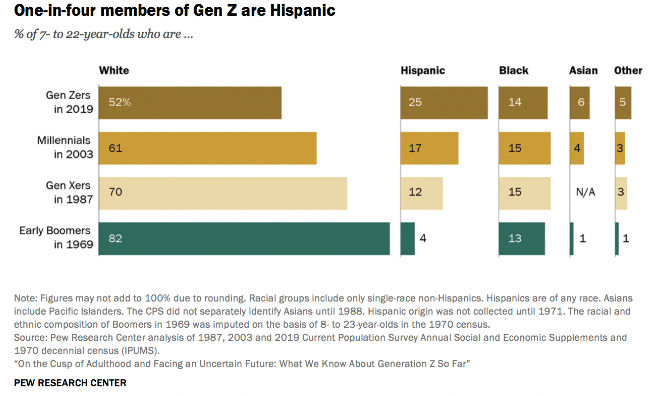


Many first-party data marketing discussions and strategies have overlooked a key fact – the importance of value exchange. Publishers and brands want to connect, market, and sell to their audiences. Changing consumer behavior and regulations mean old practices of invisibly using cookies are no longer good enough. Millennials, Gen Z, and other digital natives will only consent to share their data with brands that offer them value.

Disclosure And Asking Permission Isn’t Enough To Build An Audience
Earning permission to market to customers sounds simple in theory. Put a pop-up on your website, collect contact information, and start marketing! For a small subset of customers – those who are actively comparison shopping, for instance – this simple approach to gaining the first party may be sufficient. For the vast majority of your audience, value exchange is critical.
Every time brands and publishers want to gather consent to market; it’s crucial to ask the value exchange question. Are users receiving sufficient value from our brand to welcome us to their digital world? The bar may be even higher for communication channels perceived as more personal, like email and SMS. Earning a place (and keeping it!) in those inboxes is not something to be taken for granted, as filtering and permissions technology keeps improving.
There are significant consequences for ignoring the value exchange question. Conversion rates are likely to deteriorate at first. That means digital advertising budgets to attract traffic will deliver fewer results. Ultimately, websites will struggle with having fewer and fewer engaged visitors. Hitting growth targets will get far more difficult. Worst of all, building deeper relationships with your audience, including learning their preferences, becomes increasingly demanding.
The starting point to avoid these problems starts with understanding your market’s needs, wants, and desires. Let’s take a closer look at the Gen Z demographic and what they want.
What Does Gen Z Want?
Generation Z is defined as those born between 1996 and 2010. The Generation is 68 million strong in the United States, slightly larger than Gen X (65 million) and smaller than Millenials (72 million). Gen Z is already becoming significant economically, with $360 billion in disposable income, according to Forbes. Today, Gen Z has less purchasing power and wealth than older generations. Millennials have an estimated disposable income of $1.4 trillion, which is more than triple the disposable income of Gen Z ($360 billion). That said, Gen Z disposable income will only increase over time. Therefore, publishers that build and retain a Gen Z audience now will have a long-term advantage.
That leaves the question: what does Gen Z want from brands and publishers? Some ways to answer this question include looking at surveys and drawing insights from other customer cohorts.
Industry surveys of American Gen Z behavior have found that:
Gen Z is highly demographically diverse
In comparison to other generations, Gen Z is highly diverse, according to the Pew Research Center. For example, 25% of Gen Z is Hispanic compared to 17% of Millennials or 12% of Gen X. Also, Asian Americans comprise a growing portion – 6% – of the group. Marketing efforts need to reflect these expectations.

Higher Online Shopping But Fewer Impulse Purchases
Growing up in the aftermath of the 2008 financial crisis, the pandemic, and high inflation, Gen Z has seen a lot of economic turbulence in a short time. A Creatopy survey found that 32% of Gen Z buy when there is a sale, and 48% buy when they need something.
Gen Z cares strongly about social responsibility issues

Does your brand fight racial and sexual discrimination? A 2022 survey found that 66% of Gen Z agree or strongly prefer brands that take social responsibility seriously. For more tips, and warnings, on sustainability and social responsibility, check out our blog post on The Top 5 Gen z Shopping Trends.
Gen Z Are Heavy Social Media Users
Gen Z social media usage typically exceeds three hours a day. Regarding purchase decisions, TikTok videos, Instagram, and Facebook are vital.
Meeting these expectations is crucial for your brand to have an opportunity to compete today. Immediate gratification isn’t the whole story, however. Eventually, Gen Z will advance in their careers, buy homes and make other life changes.
Putting Value Exchange For Gen Z At The Heart of Your Digital Strategy
For your digital strategy to thrive, each person who visits your online presence needs to see value in joining your community. Depending on your budget and strengths, there are different ways to offer compelling value. Some of the most popular ways to provide digital value to Gen Z include the following:
Classic Direct Marketing Incentives
There’s a good reason why the vast majority of ecommerce brands use discount codes
liberally. They work! Whether structured as a 10% off, buy one get one (“BOGO”), or some other structure, these incentives work well in e-commerce. The challenge is that so many brands use discounts that it can be tough to stand out in a sea of similar-sounding offers.
Content
Offering interesting content remains a proven way to attract attention. A content strategy for Gen Z will need to include highly visual media like Instagram posts and TikTok videos. Regularly posting content will keep your brand top of mind when the audience is ready to buy.
Community
allowing your audience to connect with you and their peers is a powerful form of value exchange. Unlike marketing incentives and sales, building a thriving online community takes more effort. That means there is a greater opportunity to stand out and earn Gen Z’s attention.
Expressing Values and Identity
Social responsibility is a top concern for many in Gen Z. If your brand has active partnerships with non-profits or charitable organizations, emphasize this fact. If you donate a portion of purchases to good causes, feature that decision in marketing. Giving buyers the ability to express their values with purchases and community participation is a powerful way to set your brand apart.
How To Get More Engagement And Leads With Community Value
You probably have an active content and marketing program to connect with the Gen Z audience. The next step is transforming casual, anonymous website visitors into engaged audiences. Live digital community experiences using Arena Live Chat are a powerful way to do just that by holding online conferences, live shopping events, and more. Learn more about Arena Live Chat.



